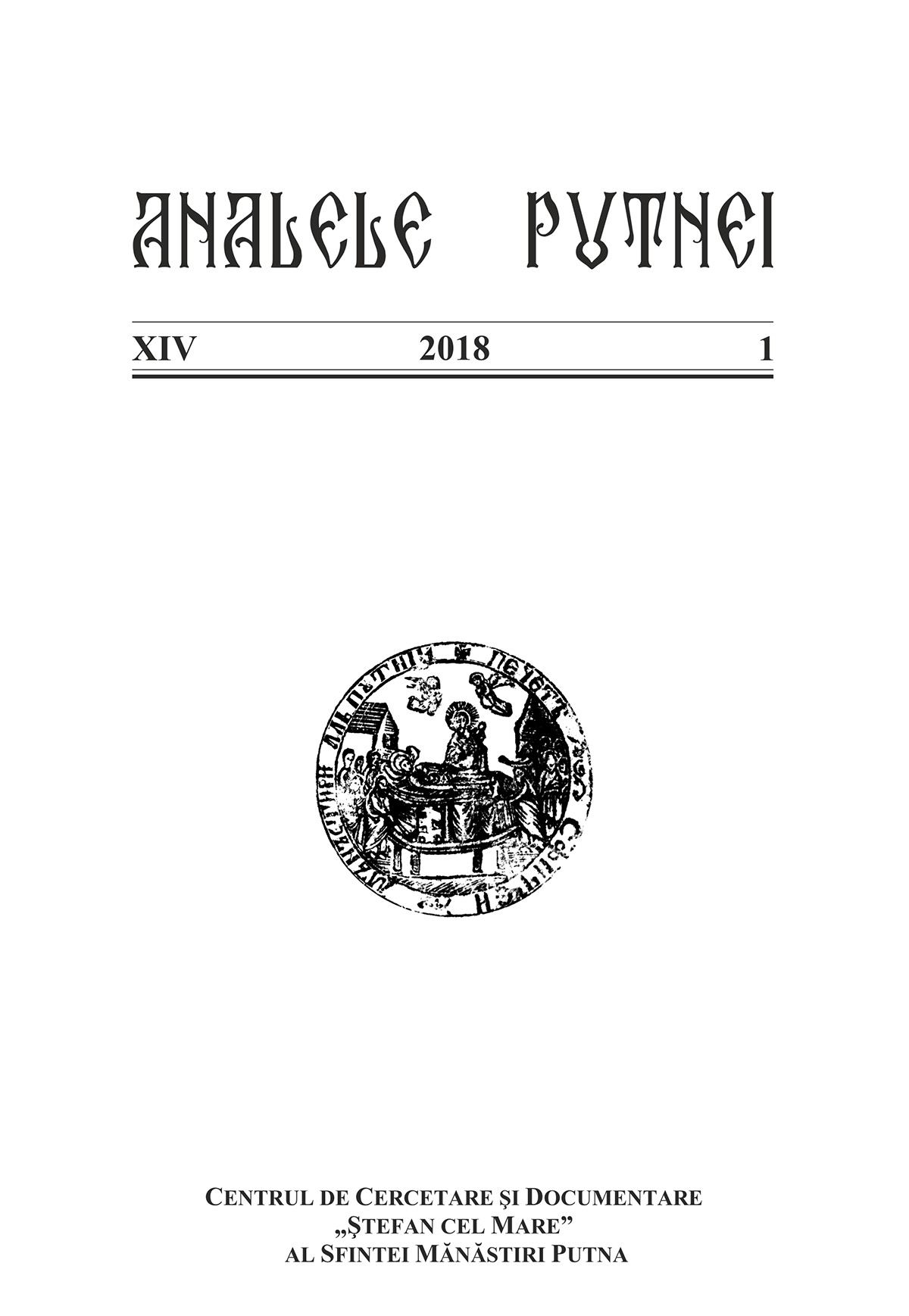Încercările unei generații. Putneni în administrația bisericească din Moldova (a doua jumătate a secolului al XVIII-lea)
The Trials of a Generation. Monks from Putna Monastery in the Ecclesiastical Administration of Moldavia (Second Half of the 18th Century)
Author(s): Ioan-Augustin GuriţăSubject(s): 18th Century
Published by: Centrul de cercetare şi documentare ŞTEFAN CEL MARE
Keywords: Moldavian Metropolia; Dosithei Herescu; Gavriil Callimachi; Church Administration; Bukovina; exempt bishop of Bukovina;
Summary/Abstract: The second half of the 18th century was one of the thriving times for Putna Monastery. Apart from the fact that the church of the monastery and the monastic complex were restored and adorned, at some point the entire superior ecclesiastical hierarchy of Moldavia was comprised of hierarchs who were tonsured at Putna. Also, many of the hegumens of the Moldavian monasteries were Putna monks or had close connections with Putna. But this “golden generation” had to face a lot of obstacles, playing an important role in the life of the Church of Moldavia. The Russian occupation and the estrangement of the northern part of the country, with all its social, political, economic and ecclesiastical consequences, were the most difficult moments. The author presents the main personalities of the Church of Moldavia from the second half of the 18th century and their role in the key events. The main contribution of the present paper is a hitherto unknown letter, dated December 1781, from Metropolitan Gavriil Callimachi to Bishop Dosithei Herescu of Rădăuți, in which the former exhorts the latter not to go against the canons and break the ties with the Mother-Church. The letter also testifies of Bishop Dosithei’s special care for his diocese, which the Austrians eventually severed from the Moldavian Metropolia. The author brings further arguments to show that the Metropolitan from Iași and the Bishop of Rădăuți did not abandon the struggle and tried, even after secession, to maintain canonical communion between each other, thus correcting the common view of historians that this secession took place without the opposition of the two hierarchs. The “blame” of these hierarchs should thus be removed or regarded more objectively. The author also publishes in the appendix a document which shows how the most important clergymen of Bukovina, most of them Putna monks, appealed to the new authorities so that the latter preserve the old traditions within the new ecclesiastical organization.
Journal: Analele Putnei
- Issue Year: 2018
- Issue No: 1
- Page Range: 355-378
- Page Count: 24
- Language: Romanian
- Content File-PDF

